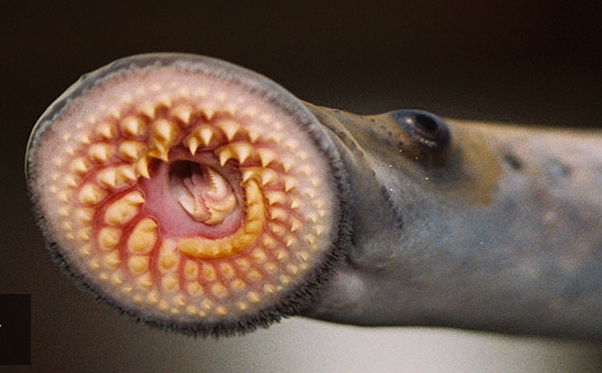The sea lamprey, the blood-sucking eel-like species that devastated the fishing industry on the Great Lakes in the 1940s and 1950s, is on the rise in Lake Superior.
The Great Lakes Fishery Commission, a Canadian-American agency, is speculating that the lamprey population may be rebounding from harsh winters in 2013/2014 and 2014/2015.
In a news release, the commission said scientists are also considering other contributing factors including prey availability and warmer water temperatures resulting from climate change.
The sea lamprey is considered one of the worst human-caused ecological disasters ever inflicted upon the Great Lakes. It invaded through shipping canals and was present throughout the Great Lakes by 1939.
The average lamprey will kill up to 40 pounds of fish during its parasitic stage, preferring trout, salmon, whitefish and sturgeon. Before Canada and the U.S. established a control program, lampreys killed an estimated 103 million pounds of fish per year. After controls were implemented, the toll fell to less than 10 million pounds per year.
According to the commission, recent estimates place the number of adult lamprey in Lake Superior at 100,000, more than twice the agency's target level. It is reportedly the first upward trend in about nine years, but the lamprey population remains far below the peak of about 800,000 six decades ago.
A targeted treatment strategy was implemented in 2016, and the impact of the program is expected to be be seen next year.
Lake Erie has also seen a recent increase in the lamprey population, but its presence in Lakes Michigan, Huron and Ontario remains at near-historic lows.
Sea lamprey control consists of several techniques including pesticides, barriers and traps. The commission is also experimenting with chemosensory cues as a way to disrupt lamprey spawning behaviour.
The commission said although the reasons for "the relatively high abundances" in Lake Superior are not fully apparent, sources to watch include areas of still water in several rivers including the Nipigon, Gravel and Batchawana Rivers on the north shore. Treatments have recently taken places in those river systems.
The commission noted in its statement that it and its partners "have ratcheted up control" in problem areas and heightened monitoring and assessment so that future control efforts will be targeted effectively.
